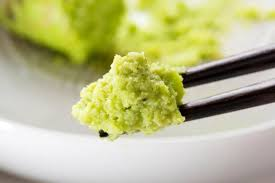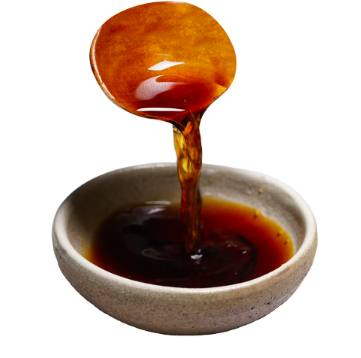Top 5 Most Popular Condiments in Europe and America

Condiments are more than just a finishing touch—they often define the identity of a dish. In both Europe and America, specific condiments have become cultural staples, deeply embedded in daily meals, street food, and fine dining alike. Their continued popularity reflects not just flavor preferences but also historical influences and modern culinary creativity.
This article explores the five most popular condiments across these regions, highlighting their characteristics, typical uses, and the evolving role of condiment manufacturers in shaping modern food choices.
Essential Roles in Daily Cuisine
Condiments serve a critical purpose in everyday meals. Whether they offer contrast, richness, heat, or acidity, these enhancers help balance dishes and highlight key ingredients. Their presence at tables—from backyard barbecues in Texas to café terraces in Paris—speaks to their universal appeal. Today’s condiment market is shaped both by traditional tastes and by the innovation of condiment manufacturers responding to health trends, sustainability, and global flavor influences.
See also: World’s No.1 Aviation Training Institute for Careers in Aviation and Hospitality
1. Mayonnaise
Mayonnaise is a creamy emulsion made from oil, egg yolks, and an acid such as vinegar or lemon juice. While originally French in origin, it has become a cornerstone of both American and European kitchens. It is widely used as a spread for sandwiches, a base for dressings like ranch or Caesar, and an ingredient in salads like potato or coleslaw.
In countries like Belgium and the Netherlands, mayonnaise is often served with fries instead of ketchup. In the U.S., flavored variants—such as garlic or chipotle mayo—are increasingly popular in gourmet burger restaurants and fast-casual dining.
2. Ketchup
Tomato ketchup remains a defining condiment in American cuisine and has carved out a significant presence in Europe as well. It combines the sweetness of sugar with the tang of vinegar and the depth of tomato paste, making it especially popular among younger demographics.
While it’s most famously paired with fries, burgers, and hot dogs, ketchup is also used as a base for barbecue sauces and meatloaf glazes. In the UK, some even mix it with curry spices for a unique twist. Its sweet profile makes it particularly suitable for foods with crispy or salty components.

3. Mustard
Mustard is a condiment with many regional variations, made from ground mustard seeds combined with vinegar, water, or wine. In France, Dijon mustard offers a sharp, refined flavor that pairs well with meats and vinaigrettes. In Germany, sweet or whole-grain varieties complement sausages and cold cuts.
American yellow mustard, which is milder and brighter, is often associated with ballpark hot dogs and deli sandwiches. Across both continents, mustard is also used in marinades, salad dressings, and gourmet sauces, making it one of the most versatile condiments in global cuisine.

4. Soy Sauce
Originally from Asia, soy sauce has become an integral part of Western kitchens due to the globalization of food. In the U.S., it is essential in stir-fries, marinades, and dipping sauces. In European fusion restaurants, soy sauce often finds its way into gravies, dressings, and even unexpected pairings like caramel-based glazes.
Its deep umami profile allows it to enhance dishes without overwhelming them. Both light and dark variants offer options for chefs to adjust the flavor and appearance of the food. Leading condiment manufacturers have adapted soy sauce into low-sodium and gluten-free alternatives, making it more accessible to broader dietary needs.

5. Hot Sauce
Hot sauce delivers heat, tang, and character to everything from eggs to tacos. Made primarily from chili peppers, vinegar, and salt, its regional variations reflect different spice levels and flavor profiles. American hot sauces like Tabasco or Louisiana-style varieties are thinner and vinegar-forward, making them great for adding sharpness to fried foods and soups.
In Europe, especially the UK, peri-peri and sriracha-style sauces are growing in popularity, often served with grilled meats or used to spice up mayonnaise-based spreads. Some artisanal hot sauces now include fruits like mango or pineapple to balance heat with sweetness.

Taste, Tradition, and Modern Innovation
While these condiments are widespread, their usage often adapts to local customs. For instance:
- Mayonnaise is more dominant in European fast food than ketchup.
- Mustard varieties differ significantly between French, German, and American cuisines.
- Soy sauce is gaining ground in both regions due to the popularity of pan-Asian dishes.
- Hot sauce consumption is increasing as consumer palettes shift toward bold flavors.
Condiment manufacturers continue to evolve their offerings by introducing organic ingredients, clean labels, and packaging designed for convenience and sustainability. Many also invest in sourcing ingredients responsibly, reducing the environmental impact of production without compromising quality.
Conclusion
The five condiments featured—mayonnaise, ketchup, mustard, soy sauce, and hot sauce—represent the most enduring and dynamic flavor enhancers in Europe and America. Their ability to complement a wide range of dishes ensures their presence in both home kitchens and professional settings. Through innovation and adaptability, condiment manufacturers remain key players in delivering the flavors that define modern meals. As culinary boundaries blur and consumer tastes evolve, these condiments continue to bridge tradition and innovation in kitchens around the world.





